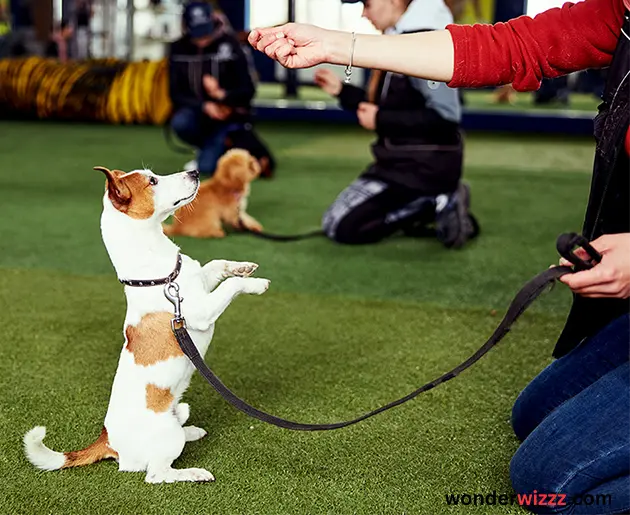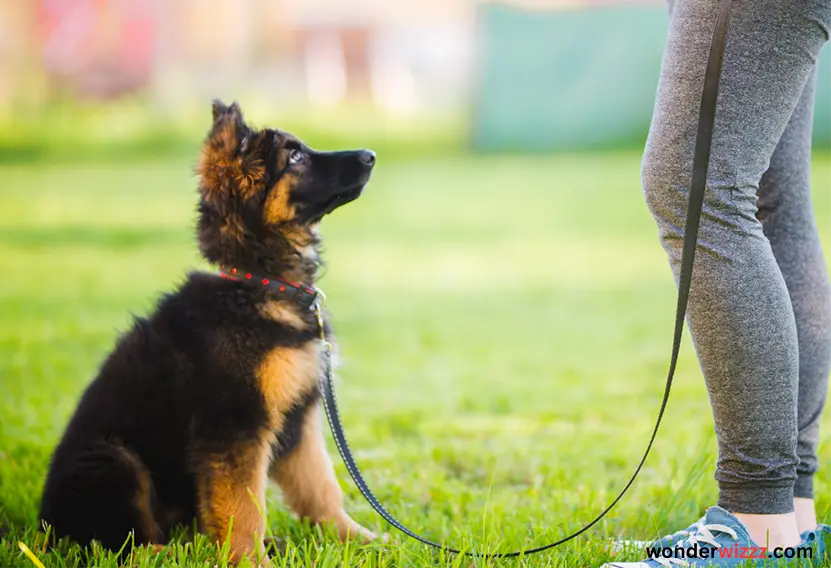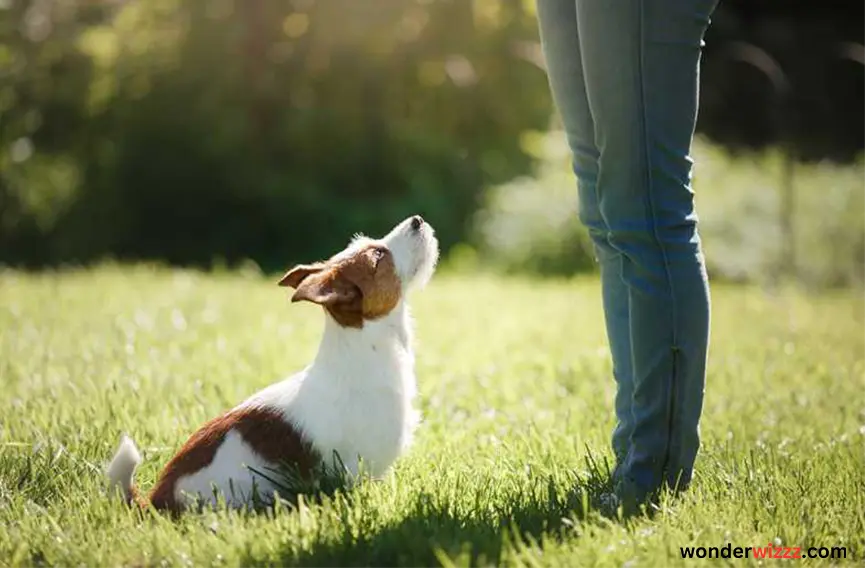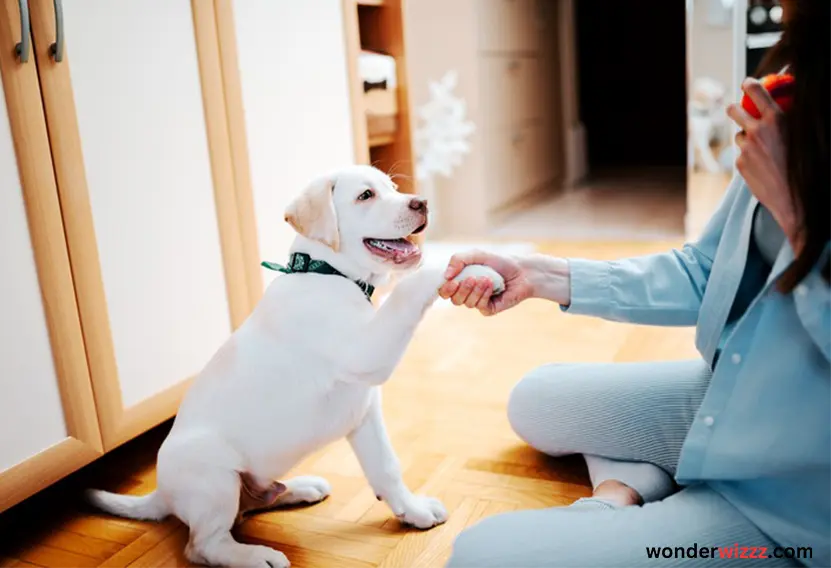What’s the Best Approach to Teaching Basic Obedience to a New Puppy?

Introduction
A. Importance of Basic Obedience Training for Puppies
Having a well-behaved puppy is essential for a happy and harmonious life together. Basic obedience training helps puppies learn good manners and understand what’s expected of them.
B. Overview of the Best Approach to Teaching Basic Obedience
When teaching basic obedience to a new puppy, it’s crucial to use positive reinforcement techniques, like treats and praise, to encourage good behavior. Consistency and patience are key, as puppies learn best through repetition and positive experiences. Breaking down training into small, manageable steps helps prevent overwhelm and ensures success. Additionally, incorporating training into daily routines, such as meal times and play sessions, helps reinforce learning and makes training feel like a natural part of life for your puppy. By focusing on building a strong bond and clear communication with your puppy, you can lay the foundation for a lifelong partnership built on trust and respect.

Understanding Basic Obedience Training
A. Definition of Basic Obedience Training for Puppies
Basic obedience training for puppies involves teaching them essential commands and behaviors to ensure they behave well in different situations. It’s like teaching them manners so they can be polite members of the family.
B. Key Behaviors Covered in Basic Obedience Training
In basic obedience training, puppies learn commands like sit, stay, come, down, and heel. These commands help them understand how to behave appropriately in various situations, both at home and in public places.
C. Importance of Starting Training Early
Starting obedience training early is important because puppies are like sponges, ready to soak up new information. The earlier you start, the easier it is for them to learn and form good habits. Plus, early training helps prevent behavior problems from developing later on.

Positive Reinforcement Techniques
A. Explanation of Positive Reinforcement
Positive reinforcement involves rewarding a puppy with something enjoyable to encourage them to repeat a behavior. It’s like saying “good job” or giving treats when your puppy does something you want them to do.
B. Examples of Positive Reinforcement Techniques
Examples of positive reinforcement techniques include giving treats, praise, or toys when your puppy follows a command or behaves well. You can also use a clicker, a small device that makes a clicking sound, to signal to your puppy that they’ve done something right.
C. Benefits of Using Positive Reinforcement in Puppy Training
Using positive reinforcement in puppy training helps create a happy and cooperative learning environment. It strengthens the bond between you and your puppy, making training more enjoyable for both of you. Plus, it helps build your puppy’s confidence and encourages them to learn new things willingly.

Consistency and Patience
A. Importance of Consistency in Training Sessions
Consistency means doing things the same way every time you train your puppy. This helps them understand what you want and what to expect, making learning easier.
B. Strategies for Maintaining Consistency
To maintain consistency, use the same commands and rewards each time you train. Set up a regular schedule for training sessions, and make sure everyone in the household follows the same rules.
C. Practicing Patience During the Training Process
Training a puppy takes time, and they won’t learn everything overnight. It’s important to be patient and understanding, even when they make mistakes. Don’t forget to acknowledge and celebrate small successes and progress as you go.

Socialization and Exposure
A. Significance of Socialization for Puppies
Socialization means helping your puppy feel comfortable and confident around people, other animals, and different environments. It’s essential for their well-being and helps prevent behavior problems later on.
B. Methods for Introducing Puppies to New Environments and Experiences
Introduce your puppy to new experiences gradually and positively. Take them to different places, like parks or pet-friendly stores, and let them explore at their own pace. Praise and offer treats to reinforce calm and confident behavior.
C. Incorporating Socialization into Obedience Training
Incorporate socialization into obedience training by practicing commands in various environments. Start in familiar places, then gradually add distractions like other people or animals. This helps your puppy learn to focus and obey commands no matter where they are.
Training Tools and Resources
A. Overview of Various Training Tools Available
There are different tools you can use to help train your puppy, such as treats, clickers, leashes, and harnesses. Each tool serves a specific purpose in teaching and reinforcing desired behaviors.
B. Recommendations for Selecting Appropriate Training Tools
When choosing training tools, consider your puppy’s age, size, and temperament. Opt for tools that are safe, comfortable, and easy for both you and your puppy to use. It’s also helpful to consult with a veterinarian or professional trainer for recommendations.
C. Resources for Further Learning and Guidance
To learn more about training techniques and puppy care, there are many resources available. Books, online articles, and videos can provide valuable information and tips. You can also consider attending puppy training classes or seeking guidance from experienced dog trainers in your area.
Common Challenges and Solutions
A. Identifying Common Obstacles in Puppy Obedience Training
Training a puppy can come with challenges like stubbornness, distractions, or fearfulness. These obstacles can make it harder for them to learn and obey commands.
B. Strategies for Addressing Challenges Effectively
To address challenges, break training into smaller steps and practice in a quiet, familiar environment. Use positive reinforcement to encourage desired behaviors and be patient when your puppy struggles. Consistency and repetition are key to overcoming obstacles.
C. Seeking Professional Assistance When Needed
If you’re struggling to overcome challenges or if your puppy’s behavior is causing problems, don’t hesitate to seek help from a professional dog trainer or behaviorist. They can provide personalized guidance and support to address specific issues and help you and your puppy succeed in training.
Conclusion
A. Recap of Key Points in Teaching Basic Obedience to a New Puppy
Remember, teaching basic obedience to your new puppy is important for a happy and harmonious relationship. Use positive reinforcement techniques, stay consistent, and be patient.
B. Encouragement for Puppy Owners to Start Training Early and Stay Consistent
Starting training early and maintaining consistency are crucial for success. The earlier you start, the easier it is for your puppy to learn and form good habits. Consistency strengthens learning and avoids confusion.
C. Emphasis on the Rewarding and Fulfilling Nature of Puppy Training
Training your puppy can be challenging at times, but it’s also incredibly rewarding. Building a strong bond with your puppy and watching them grow and learn is a fulfilling experience. Enjoy the journey and celebrate your progress together!
People also ask
How do you train a puppy in basic obedience?
Begin with basic commands such as sit, stay, and come. Use treats and praise for rewards.
How should I train a new puppy effectively?
The best way is through positive reinforcement and consistency in training sessions.
Which trick should I teach my puppy first?
Teach “sit” as the first trick, as it’s easy and foundational for other commands.
How do I start basic puppy training?
Begin with short training sessions in a quiet environment using treats and positive reinforcement.
How long does it take a puppy to learn obedience?
Puppies can start learning basic obedience commands in a few weeks with consistent training.
What are the 5 basic puppy commands?
The 5 basic commands are sit, stay, come, down, and heel.



